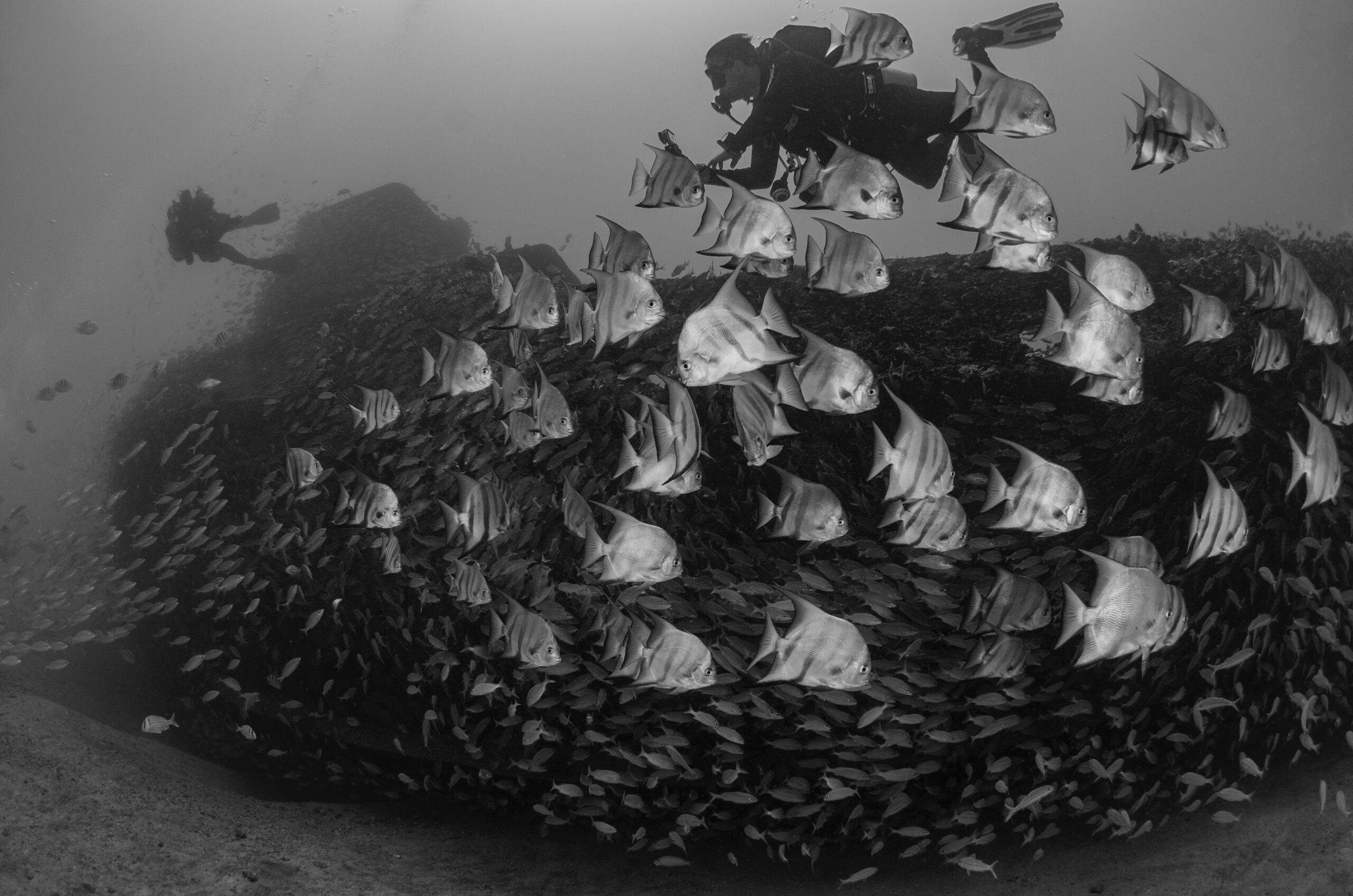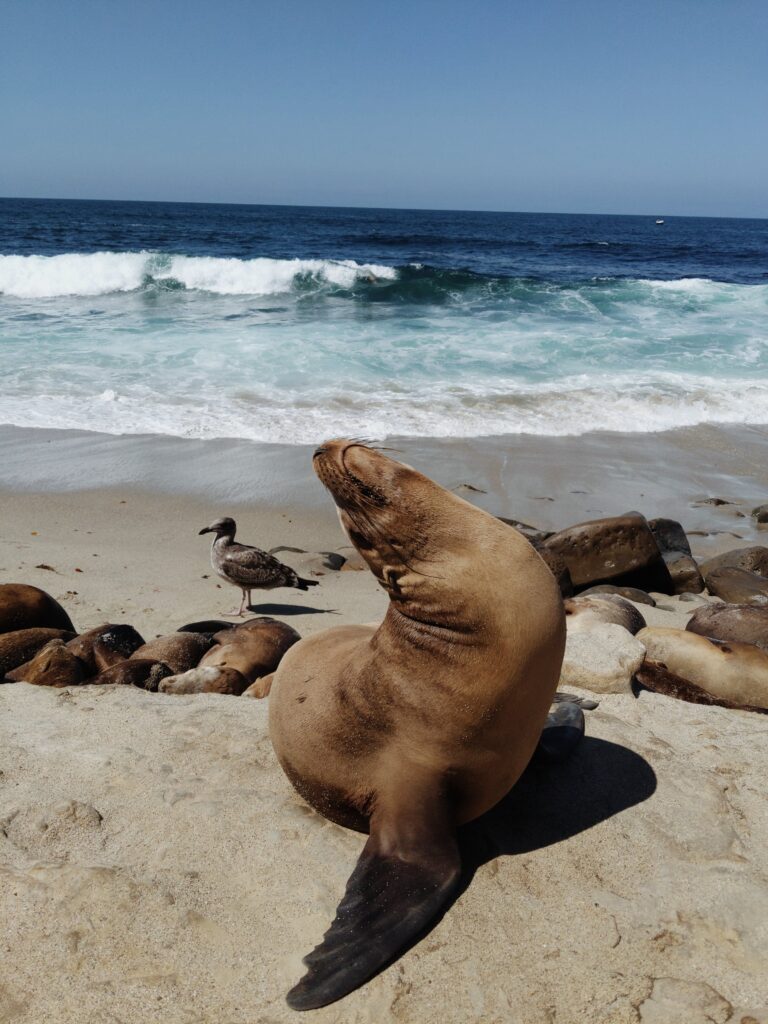Introduction
Beneath the shimmering surface of our oceans lies a vast and intricate tapestry of life, where marine organisms weave together the story of Earth’s genetic diversity. However, this diversity is under threat due to human activities. In this exploration, we delve into the critical role that ocean conservation plays in safeguarding marine genetic diversity. From the smallest microorganisms to majestic marine mammals, the conservation of these genetic resources not only ensures the health of our oceans but also holds the key to unlocking potential breakthroughs in science and medicine.
The Vital Connection: Ocean Conservation and Genetic Diversity
In the intricate web of marine ecosystems, the crucial link between ocean conservation and genetic diversity cannot be overstated. As diverse as the ocean itself, the genetic makeup of marine species plays a fundamental role in their resilience and adaptability to environmental changes. Conservation efforts are pivotal in safeguarding this genetic diversity, ensuring the survival of species and the overall health of marine ecosystems.
Highlighting the Role of Marine Protected Areas
Among the arsenal of tools for ocean conservation, Marine Protected Areas (MPAs) stand out as guardians of genetic resources. These designated zones act as havens where marine life can flourish undisturbed. By limiting human activities such as fishing, MPAs provide a refuge for various species to breed and propagate. This protection is instrumental in preserving genetic diversity, allowing for the maintenance of robust and varied gene pools within populations.
MPAs act as genetic reservoirs, serving as insurance against the threats posed by overfishing, habitat destruction, and climate change. These protected areas not only sustain existing genetic diversity but also offer a safe space for the evolution of new genetic traits, fostering adaptability in the face of a changing environment.
Case Studies Demonstrating Successful Conservation Initiatives
Concrete examples underscore the tangible impact of conservation initiatives on genetic diversity in the ocean. Take the case of the Great Barrier Reef Marine Park, where concerted efforts have led to the recovery of coral populations and the preservation of their genetic variability. By curbing detrimental activities and implementing sustainable practices, this iconic marine protected area has become a beacon of successful genetic conservation.
Similarly, the creation of the Papahānaumokuākea Marine National Monument in the Northwestern Hawaiian Islands has yielded positive results. This vast expanse of protected waters has not only shielded endangered species but has also become a living laboratory for scientists studying the intricate interplay between genetics and environmental factors.
Overview of Human-Induced Threats to Marine Ecosystems:
Human activities have significantly impacted marine ecosystems, posing severe threats to the delicate balance of life beneath the waves. Over the years, anthropogenic activities such as overfishing, habitat destruction, and pollution have emerged as major contributors to the degradation of marine environments. These activities disrupt the natural order, causing cascading effects on the biodiversity and genetic makeup of marine species. The consequences of these actions extend beyond local ecosystems, with far-reaching implications for global marine genetic diversity.
The Link Between Overfishing, Pollution, and Genetic Diversity Loss:
Overfishing and pollution are intricately linked to the decline in marine genetic diversity. The relentless pursuit of fish stocks without adequate management leads to the depletion of key species, disrupting the intricate web of interdependence in marine ecosystems. Pollution, stemming from industrial and domestic sources, introduces harmful substances into the water, further compromising the genetic health of marine organisms. Chemical pollutants can cause genetic mutations and disrupt reproductive processes, affecting the ability of species to adapt and thrive. Consequently, this interconnected web of overfishing and pollution accelerates the loss of genetic diversity, weakening the resilience of marine populations.
The Urgency of Addressing These Issues Through Conservation Measures:
Recognizing the urgency of the situation, conservation measures are imperative to mitigate the impact of human-induced threats on marine genetic diversity. Sustainable fishing practices, backed by effective fisheries management, are essential to allow fish populations to recover and maintain their genetic diversity. Additionally, stringent regulations to control pollution sources and promote marine habitat conservation are crucial steps in preserving the genetic health of marine ecosystems. Collaborative international efforts are needed to address these challenges comprehensively and ensure the long-term viability of marine genetic diversity. Urgent action is paramount to reverse the damage already inflicted and safeguard the intricate genetic tapestry that sustains life in our oceans.

The Ecological Significance of Diverse Marine Genetics
Preserving marine genetic diversity is vital for maintaining the ecological balance of our oceans. The intricate web of life in marine ecosystems relies heavily on genetic diversity to adapt and thrive in various environmental conditions. Different genetic traits enable species to withstand changing temperatures, resist diseases, and cope with evolving predators. This diversity contributes to the overall resilience of marine ecosystems, making them more robust and capable of withstanding disturbances, such as climate change and pollution. In essence, a rich genetic pool ensures the survival and sustainability of marine life, supporting the delicate balance that characterizes healthy oceans.
The Potential for Genetic Resources in Medical and Biotechnological Advancements
Marine genetic diversity presents an untapped treasure trove of potential for medical and biotechnological breakthroughs. Many marine organisms possess unique genetic sequences that encode novel bioactive compounds with valuable properties. These compounds have shown promise in the development of pharmaceuticals, including potential treatments for cancer, infectious diseases, and neurological disorders. Exploring and preserving marine genetic diversity opens doors to a vast array of genetic resources that could revolutionize medicine and biotechnology, providing innovative solutions to some of humanity’s most pressing health challenges.
Economic Benefits of Sustainable Fisheries and Tourism Tied to Genetic Diversity
The economic implications of preserving marine genetic diversity extend to sustainable fisheries and tourism. Maintaining a diverse genetic pool ensures the resilience of fish populations, making them more resistant to overfishing and environmental stressors. Sustainable fisheries, in turn, contribute to the livelihoods of coastal communities, supporting a thriving seafood industry. Additionally, diverse marine ecosystems attract tourists seeking unique and vibrant underwater experiences. Preserving genetic diversity becomes an economic investment, as it sustains fisheries, promotes tourism, and fosters long-term economic stability for communities dependent on marine resources.
Challenges Faced in Implementing Effective Conservation Measures
Implementing effective conservation measures for marine genetic diversity is a complex task fraught with numerous challenges. One primary challenge is the lack of comprehensive understanding of marine ecosystems and their intricate genetic makeup. The vastness of the oceans makes it difficult to monitor and manage genetic diversity effectively. Additionally, anthropogenic activities, such as overfishing, pollution, and habitat destruction, pose significant threats to marine genetic resources.
Inadequate legal frameworks and enforcement mechanisms further impede conservation efforts. The absence of clear regulations and international agreements hampers the establishment of protected areas and sustainable fishing practices. As a result, there is a pressing need for stronger governance structures and global cooperation to address these challenges collectively.
Future Strategies for Preserving Marine Genetic Diversity
To safeguard marine genetic diversity for future generations, a multifaceted approach is essential. First and foremost, there is a need for enhanced scientific research to better understand the genetic diversity of marine species. This involves the use of advanced technologies, such as genomics, to identify key genetic traits and assess population dynamics. Such knowledge is crucial for developing targeted conservation strategies.
Strategies should also focus on the establishment of marine protected areas and the implementation of sustainable fishing practices. Integrating traditional ecological knowledge from local communities can contribute to more holistic conservation approaches. Furthermore, promoting public awareness and education on the importance of marine genetic diversity can garner support for conservation initiatives.
The Role of International Collaboration in Addressing this Global Issue
Preserving marine genetic diversity is a global challenge that necessitates international collaboration. No single country can effectively address the issue alone, given the interconnected nature of marine ecosystems. Collaborative efforts should include the sharing of scientific knowledge, data, and best practices among nations.
International organizations and agreements, such as the United Nations Convention on the Law of the Sea (UNCLOS) and regional fisheries management organizations, play a crucial role in fostering cooperation. Establishing a global framework for the equitable sharing of benefits derived from marine genetic resources is essential to incentivize nations to actively participate in conservation efforts.
Video Credit: Convention on Biological Diversity
FAQs
Q. How does ocean conservation contribute to genetic diversity?
A. Ocean conservation preserves habitats, preventing genetic isolation and promoting diverse breeding, crucial for maintaining genetic diversity.
Q. Can genetic diversity help marine species adapt to climate change?
A. Yes, a diverse gene pool enhances the chances of marine species adapting to changing environmental conditions, including those induced by climate change.
Q. Why are marine protected areas vital for genetic conservation?
A. Marine protected areas act as safe havens where marine species can reproduce without interference, fostering genetic diversity.
Q. What role do sustainable fishing practices play in genetic conservation?
A. Sustainable fishing practices prevent overexploitation, allowing fish populations to maintain genetic diversity and adaptability.
Q. How can genetic plasticity help marine organisms survive in warming oceans?
A. Genetic plasticity enables marine organisms to undergo genetic changes, aiding their survival in warmer oceanic conditions.
Q. Is genetic diversity equally important for all marine species?
A. Yes, genetic diversity is crucial for the adaptability and resilience of all marine species, from microscopic organisms to large marine mammals.
Conclusion
As the tides of change continue to shape our planet, the urgency to protect the genetic diversity within our oceans becomes increasingly paramount. Through dedicated conservation efforts, we have the power to not only preserve the intricate web of life beneath the waves but also harness the untapped potential for scientific and economic advancements. The role of ocean conservation in safeguarding marine genetic diversity is not merely a responsibility; it is a commitment to the sustainable future of our planet and the myriad life forms that call the ocean home. Together, let us navigate the currents of change and ensure the vitality of our oceans for generations to come.
UP NEXT
The Importance of Coastal Restoration in Climate Change Adaptation



